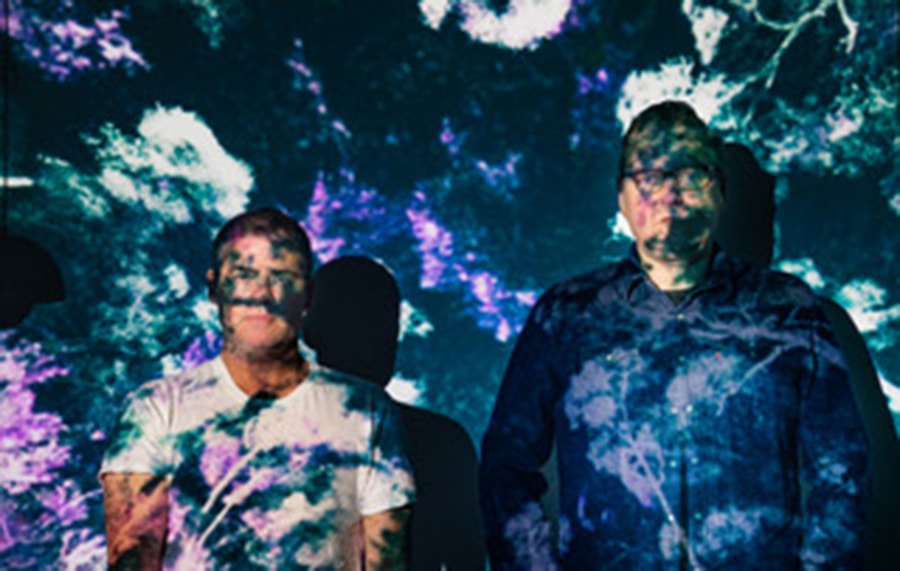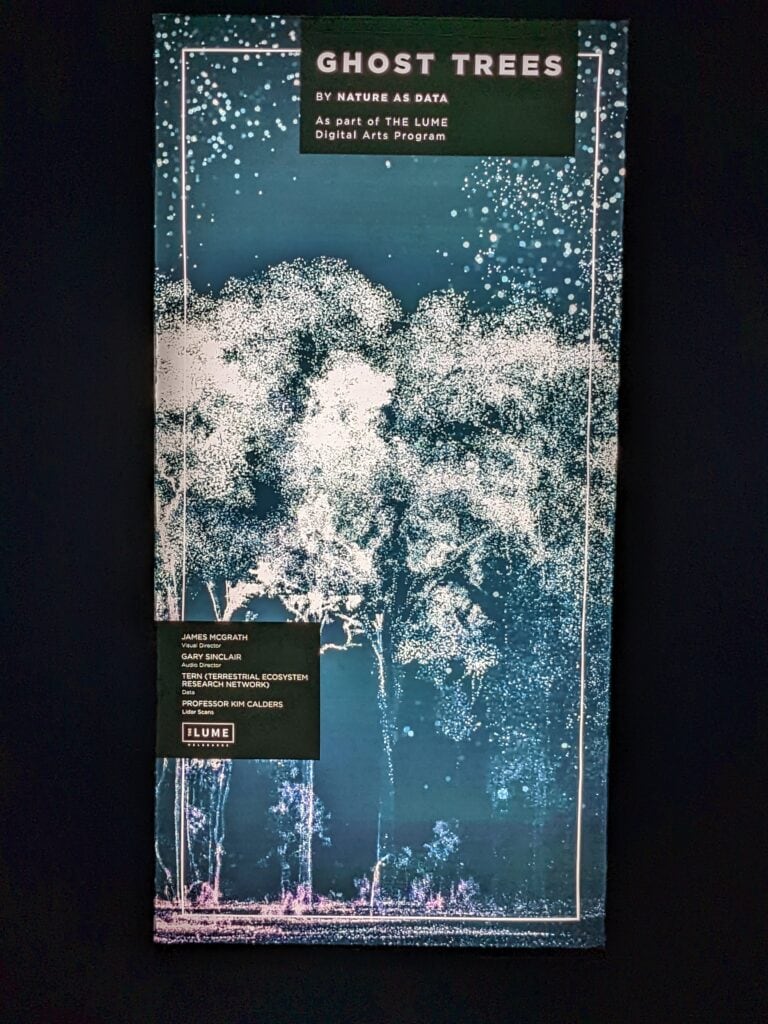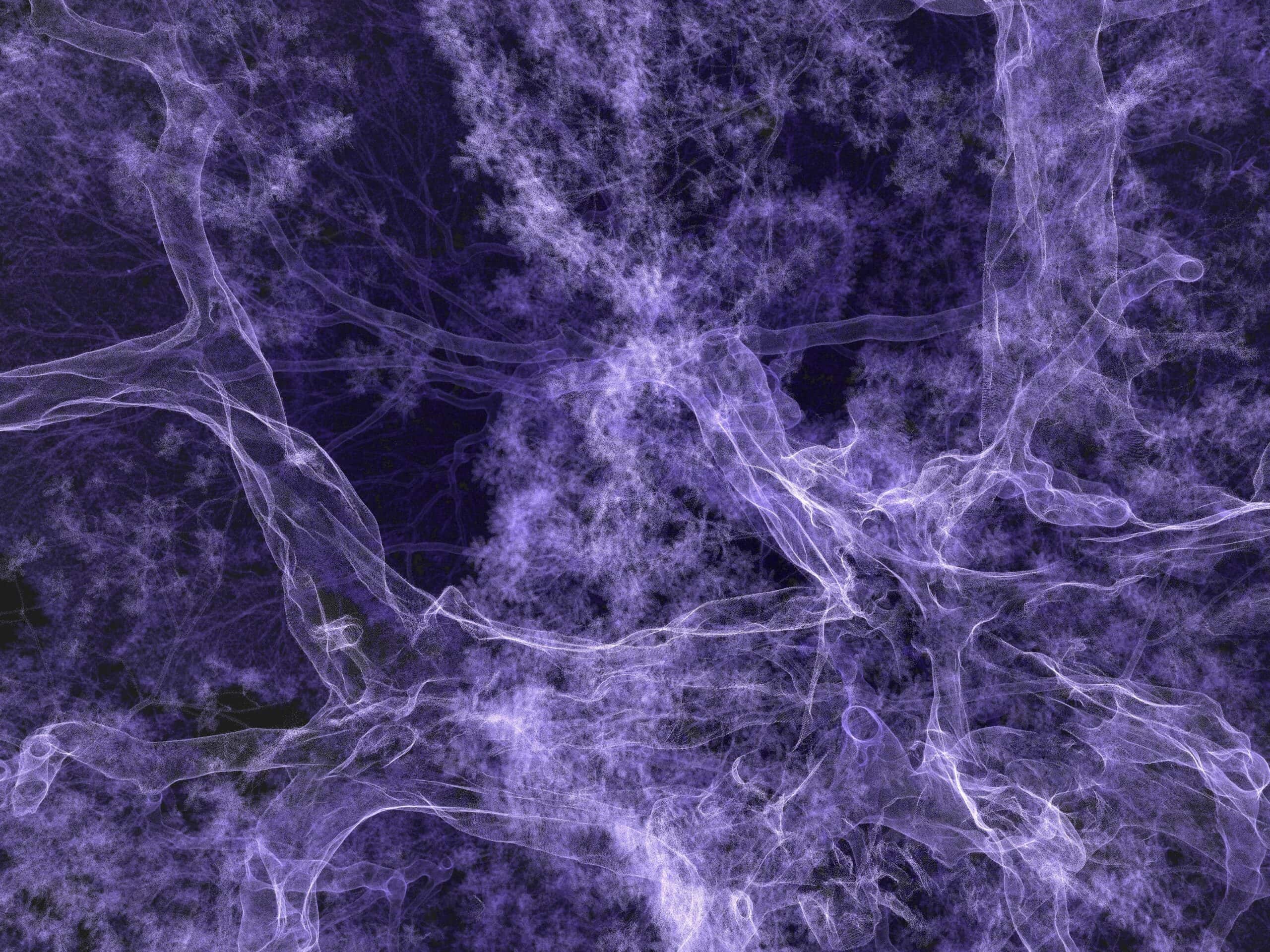Who would have thought that data could be art! Although for most people data are just numbers, spreadsheets and computers, tech-savvy artists are increasingly embracing the opportunity to demonstrate new levels of creativity through Big Data.
Among these innovators are Australian Nature as Data co-creators, James McGrath (visual artist) and Gary Sinclair (audio artist). For the past few years, they have given audiences from all walks of life across the world a chance to experience the Australian environment – all based on openly accessible data from TERN that was collected with modern conservation-driven technologies.

Using environmental laser scanning imagery data (LiDAR1) and music created from ecoacoustic2 recordings, all openly sourced from TERN, James McGrath and Gary Sinclair are showing that data can be experienced by multiple human senses. Their latest public creation is a 3D digital installation named Ghost Trees at THE LUME gallery in Melbourne, Australia, which opened last October and is on display until April 2023.
The exhibition is crafted by visualising and sonifying massive data sets. While we all understand the term visualising, sonifying is a less common term, and simply put, uses non-speech audio to make data easier to understand or be sensed.
The visual component of Ghost Trees that uses LiDAR draws upon data collected by Dr Kim Calders of Belgium’s Ghent University. Kim collected the data at TERN’s remote sensing calibration and validation (CalVal) site in the endangered Rushworth Forest on the lands of the Ngurai-illam-wurrung people in Victoria, Australia.
James explains that he and Gary did the rendering of the data themselves, avoiding too much post -processing. This was to retain simplicity and emphasise the nature of the gnarly, twisted individual trees, the mass of trees and sometimes the ground debris.
‘These Lidar datasets are ephemeral yet fixed recordings of dying ecosystems; digital memories of disappearing landscapes, echoes of our lost environment. We take the viewpoint of someone within the landscape. We fly through branches of trees experiencing the forest from unique perspectives’ James McGrath explained. ‘The Ghost Trees installation is the largest digital artwork in the world and a bit of a learning curve for me – I had to create it through a smaller 3D model as individual sections – to see it come together as one artistic piece when it was installed was amazing.’ The exhibition includes approximately 150 projectors, 90 speakers, multiple forms of displays some as high as 8 metres and around the size of two tennis courts!
Nature as Data has had many exhibitions around the world – all a little different to fit the space and audience. ‘That is what is beautiful about the TERN data – it can be repurposed, and it is very generative and has its own kind of narrative’ McGrath said.
The audio was composed using ecoacoustic data collected by sensors at multiple TERN monitoring SuperSites3. Audio artist Gary Sinclair explained, ‘We studied location recordings and processed them to reveal the musicality of the forest and its inhabitants. Melodic elements are generated from the trees spatial data points – the forest is singing! The original soundtrack drifts between the abstract and the real, creating a compelling and calm atmosphere.’
‘All the music selected is based on the inherent musicality from the site recordings. Once the recordings were ‘cleaned’ for wind noise, I could identify what notes and keys were present. This would dictate the key, chords and notes used’ Sinclair continued.
When asked why Nature as Data is so passionate about its work, McGrath and Sinclair said it is because they want to create that emotive connection with the environment. Data can be as small or as large as you want them to be and can create different artistic expressions – even poetry!
James McGrath and Gary Sinclair established Nature as Data in 2020 to artistically examine the environment around us. It is a modern non-profit collective and virtual studio exploring scientific concepts through an artistic lens. ’Our goal is to reflect science data in an emotional and engaging way. A sense of environmental and social connection is a guiding principle in our work’, Sinclair explained.
TERN congratulates Nature as Data on its success in the Ghost Tree exhibition and looks forward to the launch of the next project for James, Gary and Kim – The Children’s Tree – which is based around data collected from a tree in Sydney’s Botanic Gardens.
We leave you with one of James’ artificial intelligence (AI) poems that is based on TERN data.
The trees are ghosts
of what once was
Their limbs reach out
to the memories we hold
The trees are ghosts now,
memory and climate change.
They whisper in the wind,
a reminder of what once was.
© James McGrath

Notes:
- LIDAR uses a laser to target an object and measure the time for the reflected light to return to the receiver. It generates a complex data set of points which can be translated into a 3D render.
- Ecoacoustics explores natural and human activity related sounds and their relationships with the environment over multiple scales of time and space.
- TERN SuperSites combine instrumented or sensor measurements with classical field surveys and remote sensing activities at significant Australian biome sites, spanning a wide range of environmental conditions
More Ghost Trees stories and images
- James McGrath on Instagram: ""Ghost Trees" still on at @thelumemelbourne .
- What's on | Digital Experiences In Melbourne | The Lume (thelumemelbourne.com)
- James McGrath on Instagram: "2 years, 150 projectors, a 3000m2 hall and 70 speakers later
- james mcgrath on Twitter: "Largest digital artwork in the world. A bit of a learning curve for me.
- Ghost Trees | TERN Australia
- Tactilemusic on Instagram







